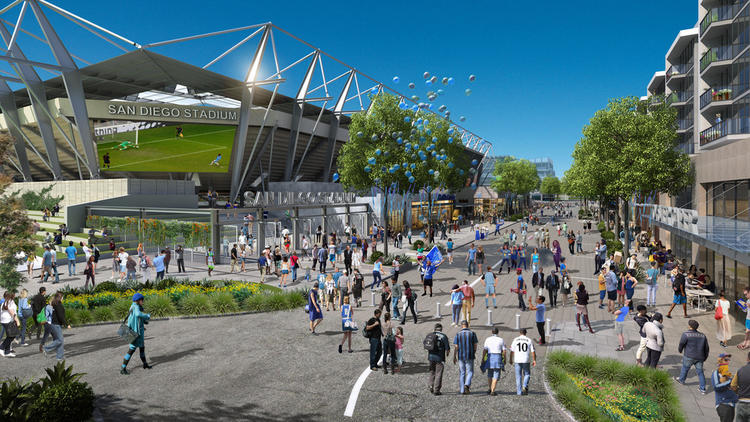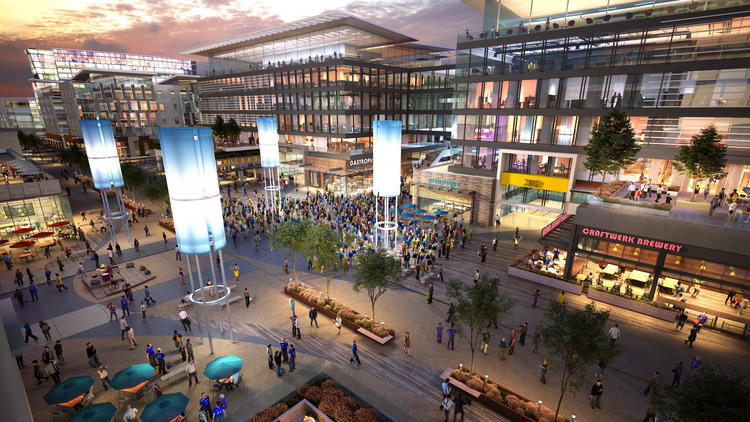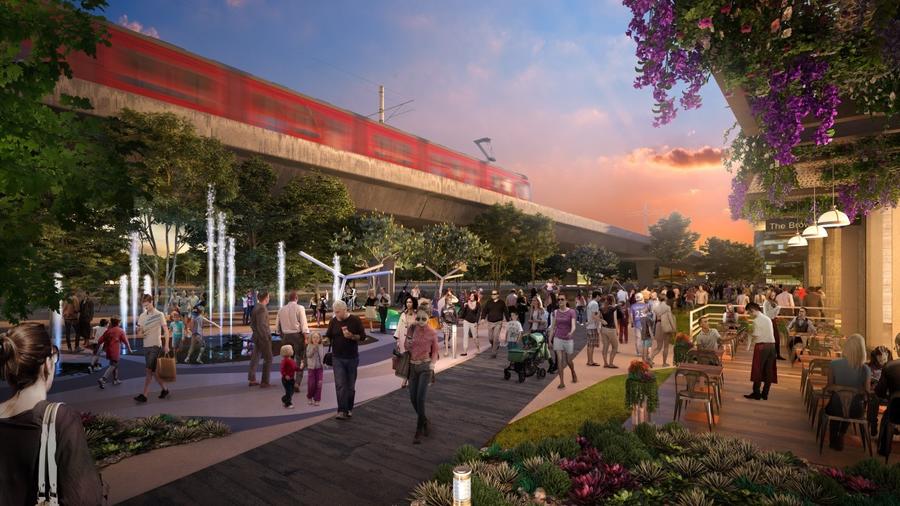A SoccerCity MLS stadium proposal was unveiled today by San Diego investors, with a development featuring more than 2.4-million square feet of office space, 4,800 homes, two hotels and 800 student apartments would go up on the 166-acre Qualcomm Stadium site.
FS Investors is proposing a SoccerCity mega-development that would cost over a billion dollars and dramatically remake the Mission Valley stadium site into a huge mixed-use installation anchored by a stadium of some sort, whether it be a MLS-specific facility or one shared with San Diego State University. The entire development would be privately financed by FS Investors, who would also own the potential MLS expansion franchise.
Though some parts of the plan are specific, the actual stadium plan is not; one option calls for a 22,000-seat MLS stadium, and one calls for a $200-million 32,000 stadium for both MLS and San Diego State University football, expandable to 40,000. SCSU would need to raise $100 million toward the stadium cost, with FS Investors The development team and SDSU have not yet agreed on a stadium plan, and it may take a little finesse to bring SDSU to a final agreement. From the San Diego Union-Tribune:
Potential snags in the deal with SDSU include stadium size and an opportunity to expand to 40,000 seats in a way that, [SDSU Athletic Director John David] Wicker said, “is not cost prohibitive”; eventual ownership of the land under the stadium; additional land for university expansion; and parking and traffic mitigation in an already congested Mission Valley corridor.
“If (the project) is like a Chargers game day every day and we’re trying to introduce another 30,000 heading into the stadium,” Wicker said, “that just exacerbates the situation and makes it worse.”
Campus spokeswoman Gina Jacobs issued an official statement Monday that threw into question SDSU’s willingness to partner with FS Investors:
“We have reviewed the renderings and descriptions presented by FS Investors and we wish to clarify two critical issues: First, given the proposed density of development in the stadium area, there is no prospect for future expansion to 40,000 seats. Second, while the proposed gift of stadium ownership may convey tax advantages to FS Investors, it conveys no revenue or rights of ownership normally associated with a gift. We look forward to working with the mayor, the city council and the San Diego community to construct a mixed-use stadium that will serve the needs of SDSU’s top 25 football program.”
The plan also sets aside 16 acres of land for a potential NFL stadium west of the current Qualcomm Stadium site, but that offer is extended only for five years. The assumption is that the NFL can share all the amenities of SoccerCity — parking, retail, restaurants — with a stadium on a relatively limited footprint.
San Diego has been a clear frontrunner to land an expansion MLS franchise, and this proposal could end up clinching the deal. The next step: collect enough signatures to put the proposal to approval from the City Council, followed by a public vote. However, it’s assumed MLS will announce the next rounds of expansion between City Council approval and a public vote, so voters will know if they are indeed approving a move toward a new home for an expansion team.
RELATED STORIES: San Diego, Tampa Bay Make Their MLS Cases; San Diego MLS Plan Unveiled; San Diego Close to Revealing MLS Pitch; San Diego Looks to Advance MLS Stadium Push; Residents Polled on New San Diego MLS Stadium; Padres Owner Among Potential San Diego MLS Leaders; San Diego Eying MLS Team



